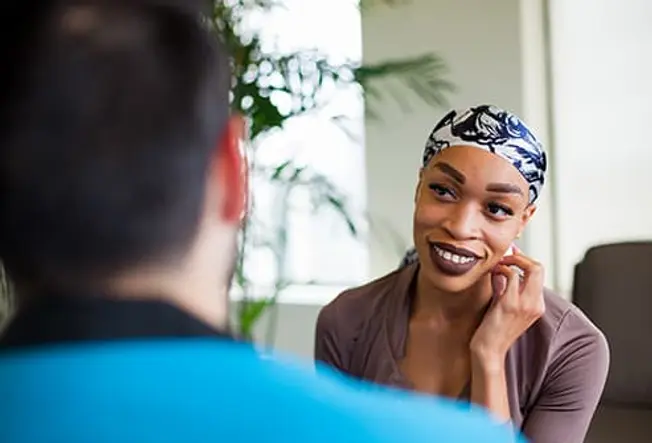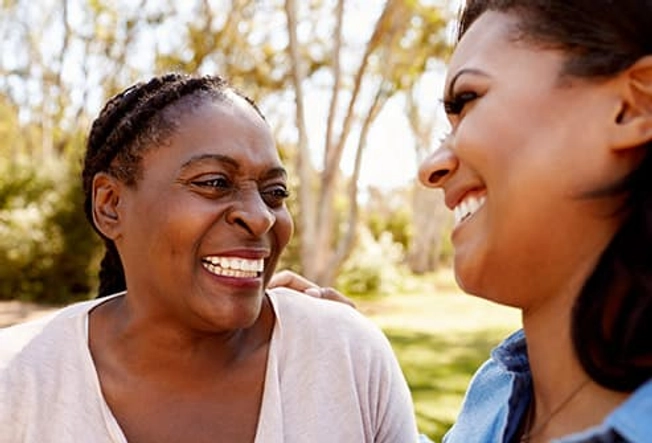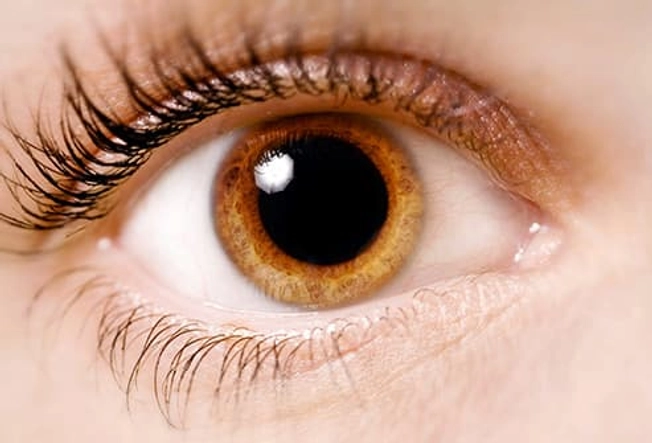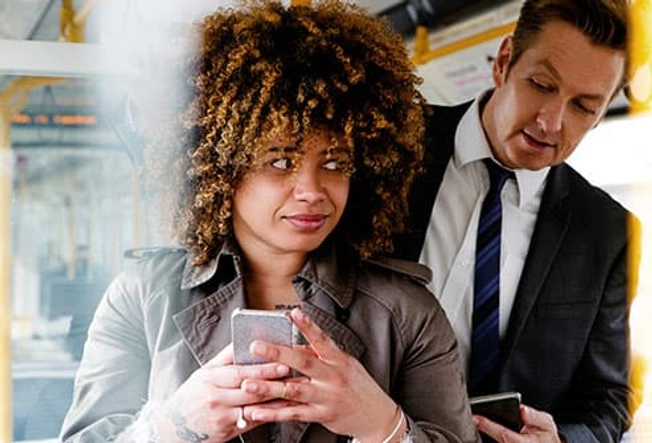
Silent Signals
1/15
Sometimes, it doesn’t even take a single word to send out a message loud and clear. Is your body language skewing others’ view of you? Are your expressions, gestures, and positions revealing feelings you’d rather keep hidden — or that you aren’t even aware of?

Licking Your Lips
2/15
Maybe you’re just daydreaming about lunch, but to a conversation partner, licking your lips can read as sexual attraction. You may also wet them when talking about a romantic partner — which can be a sign you’re sexually satisfied and deeply in love.

Handshake
3/15
Handshakes and first impressions go, well, hand in hand. A nice, firm grip combined with a hearty (but not too hearty) shake can imply you’re outgoing and confident. A limp and weak squeeze sets you up as unsure. How long you hold your shaker’s hand matters, too: If you drop out too quickly, it can suggest shyness.

Nodding
4/15
Bobbing your head up and down during a conversation can make you seem agreeable and interested. Nods are catching, so if you nod while you speak, you might convince others to go along with what you’re saying.

Posture
5/15
There’s a reason people say they’re “in a slump” when things aren’t going their way. Science says slouching your shoulders can make you hold on to stress and feel sad. Standing up straight can help you feel positive and come across as confident and focused.
Having trouble standing tall? Check in with your doctor to see if there’s an underlying medical cause like osteoporosis.

Touching Your Face and Hair
6/15
Twirling a lock, brushing back your bangs, or bringing your hands to your face can come across as flirty. “Self-grooming” behaviors like these may make it seem like you’re hoping for attention from someone you fancy.

Locking Eyes
7/15
A steady gaze creates a mixed bag of emotion. If the person you’re talking to is comfortable with you, they’re more likely to find you trustworthy if you hold eye contact. If they’re unsure about you, a long look will make you seem more threatening. And no matter what someone thinks of you, everyone has an eye contact threshold where things start to feel … awkward.

Smiling
8/15
A feel-good grin is contagious. When you smile at someone, it sends a signal to their mouth muscles to do the same. Their smile triggers the parts of their brain that deal with happiness, and they feel a greater sense of connection with you.

Stance
9/15
Standing wide with uncrossed legs or arms tends to give off an “open and available” vibe. Staring at the ground or keeping your arms across your chest are more likely to send the signal that you’re closed off and out of reach.

Hand Gestures
10/15
Want to be memorable? Talk with your hands. When you gesture as you gab, it’s more likely that your words will linger in someone’s mind. But don’t overdo it. Big movements may make you seem out of control and excitable.

Dilated Pupils
11/15
You may want to slip on some shades next time you’re around your crush so the “windows to your soul” don’t give away your secret longing. When you’re interested in or aroused by someone, your pupils dilate. It’s not something you can control, but it may help you out with your object of affection: having larger pupils tends to make you more attractive to others.

Tense Lips
12/15
If you tend to press your lips together, you should know: Liars are more likely to have this habit than people who tell the truth. Being (literally) tight-lipped could make you come across as untrustworthy.

Distance
13/15
It’s good to respect personal space, but when you lean away from someone, they’re more likely to suspect your motives. Same goes for fidgeting or crossing your arms. Leaning forward suggests partnership and that they can rely on you.

Microexpressions
14/15
No matter how hard you try to “fix your face,” it may still give you away — and it only takes a fraction of a second. Just a flash of a facial twitch, grimace, or raised brow leaves an impression that’s hard to shake. So if your unguarded reaction to something is disgust, chances are an observer may sense that in their gut, even if they can’t say why.

Mirroring
15/15
Copying the way someone’s standing, their expressions, or even their accent often builds trust and understanding between you. But this doesn’t always work. If you’re in a position of power over the person you’re mirroring, it can weird them out. Another barrier: Botox. When you can’t furrow your brow alongside someone else, for example, you won’t be able to relate to their feelings as deeply — and vice versa.


